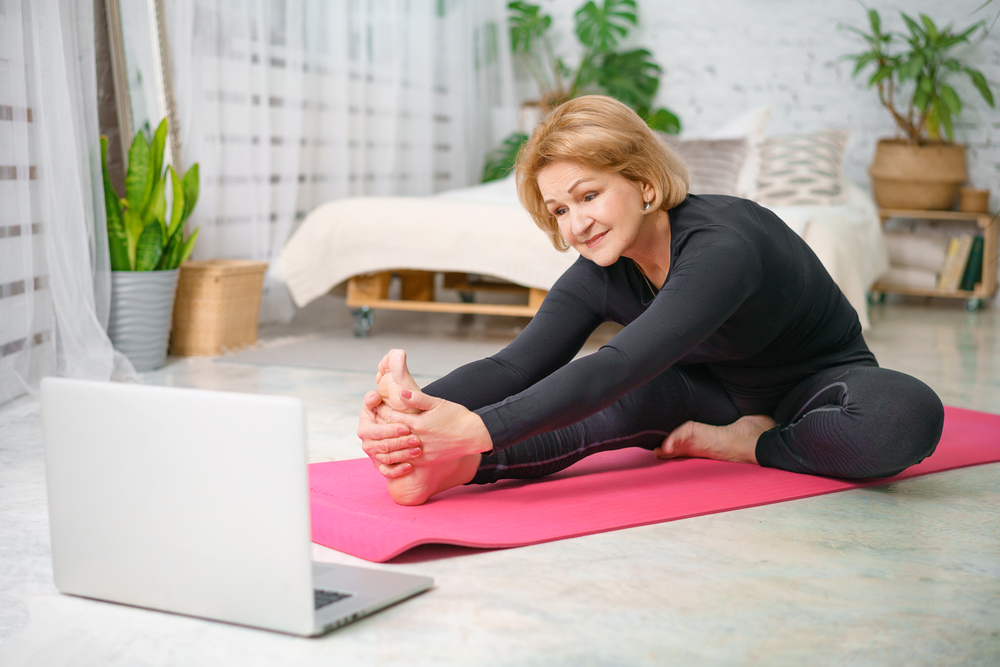Working out at home is a great way to stay fit, but like any form of exercise, home workouts can also lead to some common injuries if you aren’t careful. Learn how to prevent them.
When the COVID pandemic forced many people out of the gym, home workouts became more popular than ever before. What was intended to be a temporary switch for many people has turned into a whole new way of exercising. That’s no surprise since there are many advantages to home workouts, from being able to exercise at your own convenience, to not having to worry about the weather, to being able to squeeze smaller workouts in throughout the workday.
But just because you’re exercising in your house doesn’t mean you’re any less likely to be injured than you would be if doing those same exercises at the gym or in a workout class. Luckily, taking simple precautions to prevent home-based workout injuries will help you get the most of your exercise routine and keep you healthy and pain-free.
Common home workout injuries and how to prevent them
Orthopedic injuries can happen anywhere — including in the comfort of your own home. Lifting weights can cause back pain if not done properly. Repetitive actions can strain the tendons, while sudden movements can pull a hamstring. Improper approaches to overhead exercises can lead to a shoulder impingement. Accidents can happen at home that could injure your ligaments. And, as with anywhere, working out beyond your capacity can leave you with sore hips and knees — or worse.
The good news is that all of those injuries are preventable as long as you take proper precautions. When planning your home workout routine, follow these six guidelines to stay safe:
- Warm up and cool down. Don’t start your workout without warming up your muscles. Stiff muscles are more vulnerable to injury. Run or jump in place to raise your heart rate and get your muscles ready to exercise. Stretching before exercise is a good idea, too. After your workout, cool down with some simpler exercises to slow your heart rate and give your body time to recover.
- Use proper form. One advantage of working out in a gym is having access to trainers who can help you get your form and posture right. When working out at home, it’s important that you still maintain proper form. The good news is that you can still follow those same proper techniques by watching exercise videos online.
- Take your time. With work and family obligations, you may be tempted to rush through your workout. Don’t! Rushing only leads to injury. Take your time and, if you feel a bit tired or achy, stop, rest, and start up the next day. Make sure to always listen to your body no matter where you’re working out.
- Wear supportive shoes. Whatever exercise you do, your feet will bear a lot of the weight. Buy a pair of shoes with solid arch support to protect your feet and ankles. Just because you’re at home that doesn’t mean you should be doing your exercise barefoot.
- Get an exercise mat. Exercising on carpet, hardwood floors, or cement is not recommended. You could slip and fall and severely injure yourself. If your exercise program includes lying down, jumping, or planks, buy a thick exercise or yoga mat to keep yourself safe.
- Invest in equipment. It’s up to you how much you want to invest in exercise equipment, and there are certainly many options available at various price points. If you’re serious about your home workout, invest in good equipment and don’t try to makeshift your own tools. For example, if you lift weights, purchase a set of dumbbells of varying weights instead of using cans of vegetables or other household goods. The right equipment will make exercising easier, more enjoyable, and more beneficial in the long run.
What to do if you suffer an injury
Did you suffer an injury while working out at home or at the gym? No problem! The physicians and physical therapists at New York Bone & Joint Specialists can diagnose and treat your injury to help you recover as quickly and painlessly as possible. We’ll also help you find the proper form and technique to prevent further injury once you’re ready to exercise again. Contact us today for a consultation.




